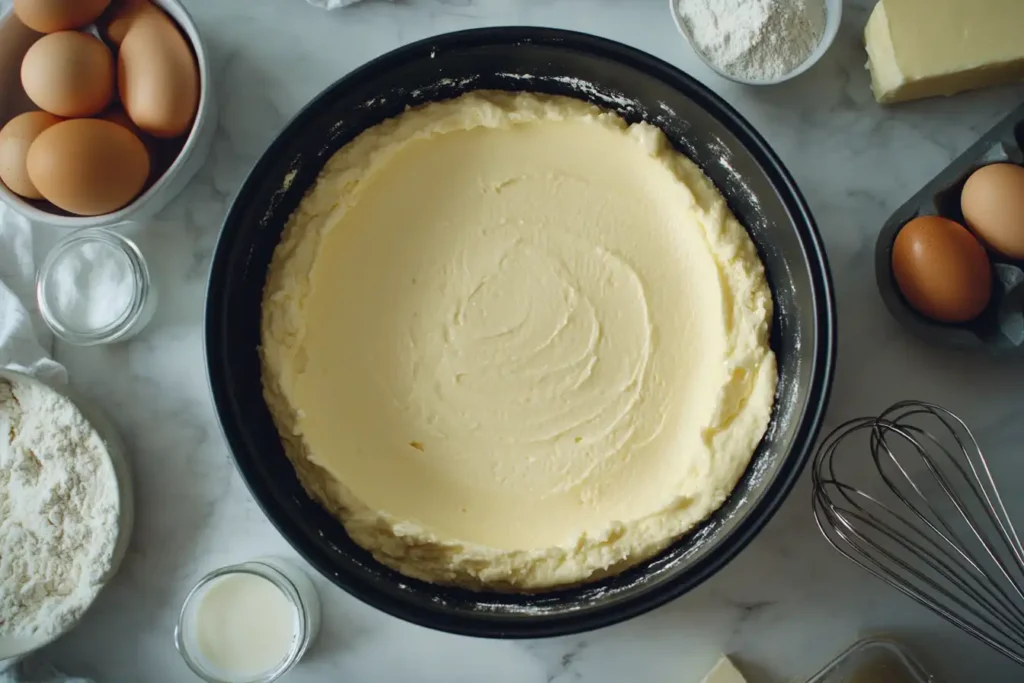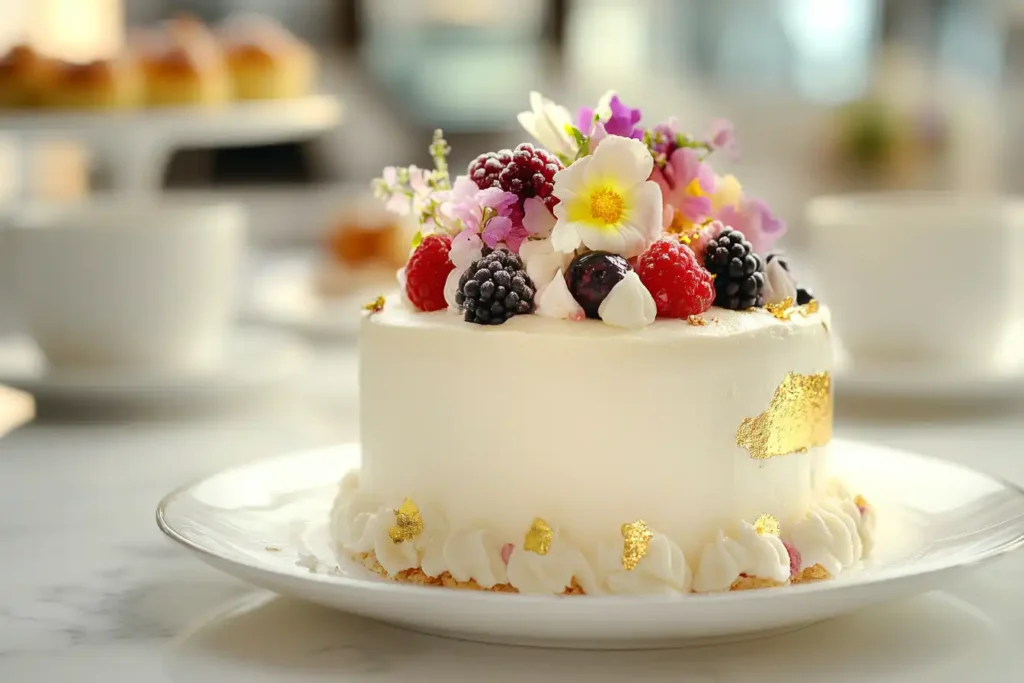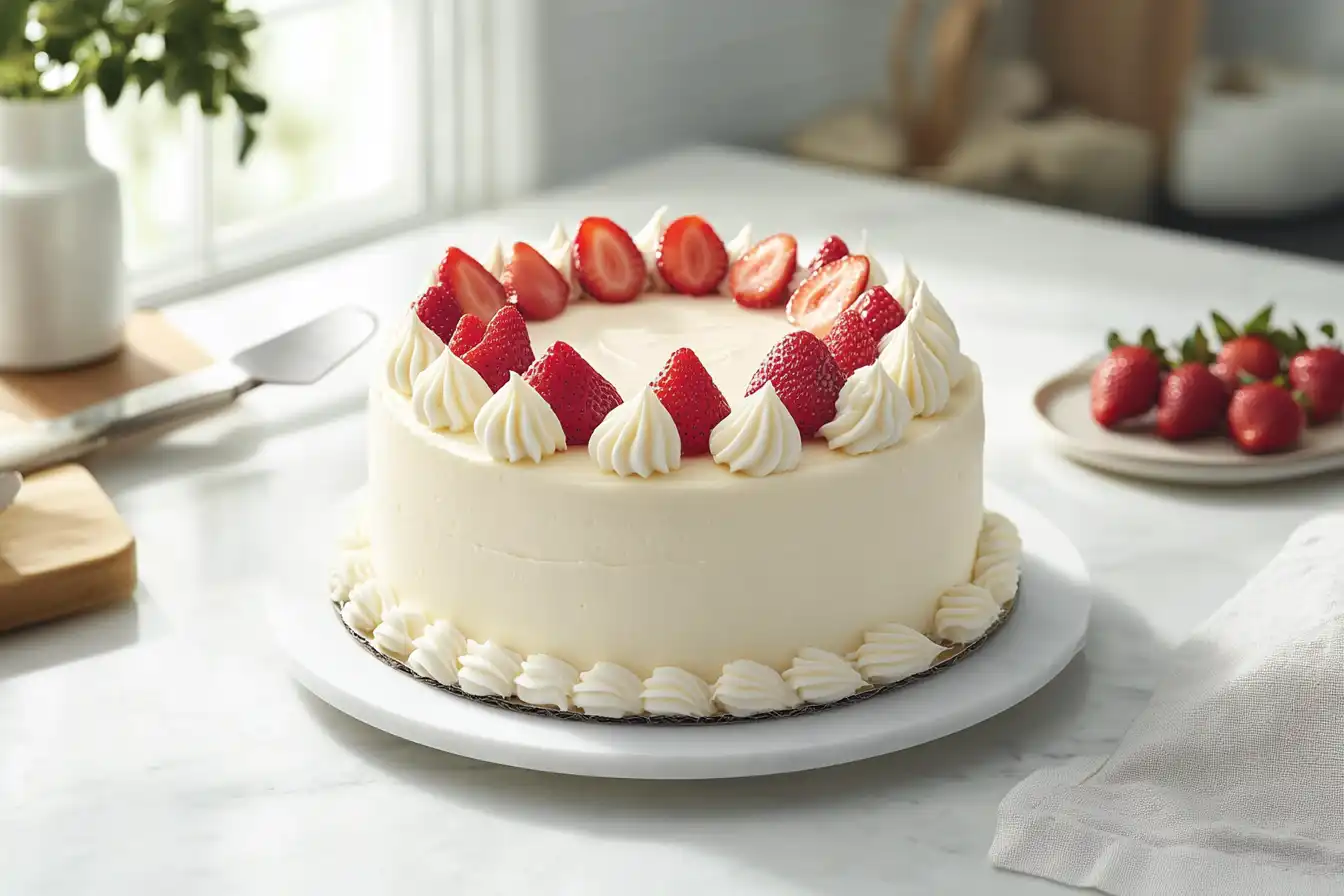Delving into the world of desserts is like stepping into a realm of infinite possibilities. Among the crowd of cakes and pastries lies the charming Mary Jane cake, a delightful treat with a unique twist. In this article, we’ll uncover everything about this special dessert—from its origins and cultural impact to its irresistible appeal in modern cuisine. Whether you’re a dessert enthusiast, a curious home baker, or simply someone exploring the sweetness of life, this guide promises a mouthwatering journey.
Introduction to Mary Jane Cakes
What is a Mary Jane Cake?
A Mary Jane cake is more than just another dessert—it’s a small, round sponge cake that packs a big punch of flavor and creativity. Known for its distinctive circular indentation, this dessert is often topped with fruits, whipped cream, or even decadent chocolate ganache. Unlike your average cupcake or petit four, a Mary Jane cake stands out with its minimalist charm and customizable flair.
It’s not just the taste that captures hearts; it’s the story behind these cakes that makes them special. The simplicity of the design belies the sheer versatility and elegance of the treat. Over the years, this humble cake has graced everything from tea tables to extravagant dessert displays.
A Brief History of Mary Jane Cakes
Tracing back to the early 1900s, the origins of Mary Jane cakes are rooted in culinary innovation. Designed to be a personal-sized delight, these cakes were crafted with a unique indentation on the top—perfect for holding delicious toppings. Originally, bakers kept things simple, using basic sponge cake recipes and seasonal fruit as garnishes.
However, the evolution of culinary art brought exciting variations. From chocolate-infused bases to citrusy lemon flavors, the Mary Jane cake began to diversify. Toppings, too, went from simple dollops of cream to elaborate designs of fruit arrangements and gourmet sauces. These little cakes quickly became a favorite among dessert lovers, finding a permanent place in bakery shelves and home kitchens alike.
The charm of the Mary Jane cake lies in its adaptability and timeless appeal. Whether you’re a traditionalist or an experimental baker, this cake has something to offer everyone.
The Unique Features of Mary Jane Cakes
The Distinctive Circular Indentation
One of the defining traits of a Mary Jane cake is its charming circular indentation. This design feature is more than just an aesthetic touch—it’s a functional innovation. The indentation, achieved using a Maryann pan, provides a convenient space for creative toppings like fresh fruit, whipped cream, or even luscious ganache. This unique element distinguishes Mary Jane cakes from other sponge-based treats.
Over time, bakers have experimented with these indentations, turning them into edible canvases. Whether you’re layering vibrant berries or swirling dollops of chocolate mousse, this feature ensures that every bite offers a balanced flavor explosion. The practicality and beauty of the indentation are key reasons why Mary Jane cakes have stood the test of time.
Traditional Ingredients and Variations
The base of a Mary Jane cake is traditionally a light and airy sponge cake. Ingredients like flour, eggs, sugar, and butter form the foundation of this dessert’s unmistakable texture. But the real magic happens when these cakes are adorned with toppings.
Classic versions feature simple garnishes like powdered sugar or seasonal fruits. However, modern takes often include adventurous flavors like zesty lemon drizzle, velvety chocolate ganache, or even caramelized nuts. Some bakers have gone a step further by incorporating matcha, espresso, or floral extracts into the batter. These variations allow the cake to evolve with contemporary tastes, making it a dessert for all occasions.
How They Compare to Similar Cakes
At first glance, a Mary Jane cake might seem similar to cupcakes or petit fours, but the differences are clear upon closer inspection. Unlike cupcakes, which are crowned with towering frosting, Mary Jane cakes emphasize balance between base and topping. Petit fours, though elegant, lack the versatility and charm of the iconic indentation.
If you’re looking for a dessert that combines simplicity, elegance, and adaptability, the Mary Jane cake is a clear winner.
The Cultural Impact of Mary Jane Cakes
Global Popularity and Regional Adaptations
The Mary Jane cake isn’t just a local delight—it’s a global phenomenon. In the United Kingdom, it enjoys a special place in tea-time traditions, often paired with Mary Berry’s famous lemon drizzle recipe. Across Europe, patisseries have reimagined the cake, adding luxurious toppings like pralines or mousse. Meanwhile, in the United States, Mary Jane cakes have found their way into everything from café menus to potluck desserts.
The versatility of this cake allows it to be adapted to local tastes. For instance, in Asia, bakers often incorporate flavors like matcha or lychee. In the Mediterranean, citrusy versions with candied orange peel are a hit. This ability to transcend borders is a testament to its universal appeal.
Mary Jane Cakes in Media and Pop Culture
The Mary Jane cake has also left its mark on media and pop culture. It’s a frequent star in baking competitions, where contestants showcase their creativity with inventive toppings and flavors. References to these cakes can also be found in culinary books, adding to their legendary status.
Whether you’re indulging in a classic recipe or enjoying a modern twist, the Mary Jane cake is proof that some desserts truly have timeless appeal. If you’re keen to explore more versatile cakes, Together Recipes offers a treasure trove of ideas for desserts that combine tradition with innovation.
Step-by-Step Guide to Making a Mary Jane Cake

Ingredients You’ll Need
To create a Mary Jane cake that’s as delicious as it is visually stunning, you’ll need a few staple ingredients:
- 2 cups of all-purpose flour
- 1 cup of granulated sugar
- 1 cup of unsalted butter, softened
- 4 large eggs
- 1 teaspoon vanilla extract
- 1/2 cup whole milk
- 2 teaspoons baking powder
- A pinch of salt
For the topping, you can get creative. Classic choices include fresh berries, whipped cream, or even a drizzle of lemon glaze. If you’re feeling adventurous, try adding chocolate ganache or caramelized nuts for an extra touch of indulgence.
Baking Process
Here’s how to bring your Mary Jane cake to life:
- Preheat Your Oven: Set it to 350°F (175°C) and grease a Maryann pan to ensure your cakes come out cleanly.
- Prepare the Batter: Cream the butter and sugar together until light and fluffy. Add the eggs one at a time, followed by the vanilla extract. Gradually mix in the dry ingredients—flour, baking powder, and salt—alternating with the milk.
- Fill the Pan: Pour the batter evenly into the indentations of the Maryann pan. Don’t overfill—leave space for the cakes to rise.
- Bake to Perfection: Bake for 20–25 minutes or until a toothpick inserted in the center comes out clean. Let the cakes cool completely before removing them from the pan.
Nutritional Content of Mary Jane Cake (Per 100g)
The Mary Jane cake is not only a delightful treat but also provides essential nutrients. Here’s a breakdown of its nutritional content per 100g:
| Nutrient | Amount |
|---|---|
| Calories | 350 kcal |
| Protein | 5 g |
| Carbohydrates | 45 g |
| Sugars | 25 g |
| Fat | 15 g |
| Saturated Fat | 7 g |
| Fiber | 1 g |
| Sodium | 200 mg |
Decorating Your Mary Jane Cake
Once your cakes are cool, it’s time for the fun part—decorating! Use the circular indentation to add your toppings of choice. Whether it’s a dollop of whipped cream with a fresh strawberry or a swirl of ganache with gold leaf, the possibilities are endless.
Common Questions About Mary Jane Cakes
Why Are They Called Mary Jane Cakes?
The name Mary Jane cake is a nod to its humble origins and timeless appeal. While its exact origin remains a mystery, it’s believed that the name reflects the simple, homey nature of the dessert—perfect for everyday enjoyment or special occasions.
What is a Maryann Pan?
A Maryann pan is essential for crafting an authentic Mary Jane cake. This unique baking tool features raised centers that create the signature indentation on the cake. It’s this detail that sets Mary Jane cakes apart and makes them ideal for holding a variety of toppings.
What Sets Mary Jane Cakes Apart?
Unlike cupcakes or other small desserts, Mary Jane cakes balance flavor and presentation effortlessly. The indentation not only enhances the cake’s aesthetic but also ensures a delightful combination of sponge and topping in every bite.
Modern Trends in Mary Jane Cakes
Innovative Flavors and Ingredients
As culinary trends evolve, so do the flavors of the beloved Mary Jane cake. Bakers worldwide are experimenting with unique ingredients, incorporating matcha for an earthy twist or espresso for a rich, aromatic flavor. Tropical infusions like passion fruit and coconut are also becoming popular, offering a refreshing departure from traditional sponge bases.
Even dietary preferences are reshaping the Mary Jane cake. Gluten-free and vegan versions are widely available, ensuring everyone can enjoy this delightful dessert. From incorporating almond flour to using plant-based creams for toppings, these adaptations highlight the cake’s flexibility.
Artistic Presentation and Decoration

The Mary Jane cake is a blank canvas for creativity. Today’s bakers are taking presentation to the next level, using edible flowers, gold leaf accents, and intricate piping techniques. These decorative elements not only enhance visual appeal but also make the cakes a centerpiece at events like weddings and birthdays.
What’s more, the circular indentation remains a focal point, often filled with vibrant fruit coulis, caramel swirls, or themed decorations. These modern touches ensure the Mary Jane cake retains its charm while staying relevant in the world of contemporary desserts.
Why Mary Jane Cakes Endure as a Timeless Dessert
Versatility Across Occasions
One reason the Mary Jane cake has stood the test of time is its incredible versatility. It’s equally suited for a casual afternoon tea as it is for a sophisticated soirée. The cake’s adaptability makes it a favorite among bakers and dessert lovers alike.
Whether served with a simple dusting of powdered sugar or dressed up with elaborate toppings, the Mary Jane cake caters to every taste and occasion. Its customizable nature ensures it will never go out of style.
Nostalgia Meets Modernity
The Mary Jane cake bridges the gap between tradition and innovation. For many, it evokes fond memories of childhood gatherings or cozy family moments. At the same time, its ability to adapt to modern flavors and trends keeps it relevant.
When pondering What is a Mary Jane Cake?, the answer is simple: it’s a dessert that celebrates both past and present, blending comfort with creativity. As long as there’s a place for delicious, versatile cakes in our lives, the Mary Jane cake will continue to charm dessert lovers around the globe.
Conclusion: Why Mary Jane Cakes Are a Sweet Classic
The Mary Jane cake is more than just a dessert. It’s a blend of tradition, creativity, and pure joy. Its simple sponge base and unique indentation make it stand out, while the toppings let you get as creative as you want.
First, these cakes are easy to make. Whether you’re a seasoned baker or just starting out, they’re a fun project. Next, they fit any occasion. From a quick snack to a fancy party, these cakes always impress.
Also, they remind us of the past while letting us try new flavors. You can stick to the classics or mix it up with trendy toppings. Either way, the Mary Jane cake is a delicious way to bring people together.
If you’ve been wondering What is a Mary Jane Cake?, now you know—it’s a small, versatile cake with a big heart. Give it a try, and you’ll see why it has stayed a favorite for so long.
Happy baking!
FAQs About Mary Jane Cakes
Why is it Called Lady Baltimore Cake?
The Lady Baltimore cake has a rich history rooted in Southern hospitality. It’s a layered cake traditionally filled with dried fruits and nuts, then frosted with meringue. Unlike the Mary Jane cake, which is simple and compact, the Lady Baltimore cake is known for its grandeur and elaborate design. Both, however, highlight the diversity of classic dessert traditions.
What is Mary Jane Slang?
While the term “Mary Jane” is colloquially linked to marijuana, it has no connection to the Mary Jane cake. This dessert’s name instead reflects its origins as a wholesome treat, often enjoyed during tea time or family gatherings. When asking What is a Mary Jane cake?, the focus remains on its delightful flavor and signature presentation.
What Cake Did Queen Elizabeth Favor?
Queen Elizabeth II was known for her love of the chocolate biscuit cake. A no-bake dessert, it features layers of crunchy biscuits held together with a rich chocolate mixture. Although the Mary Jane cake and chocolate biscuit cake are worlds apart, both emphasize simplicity and elegance in their own ways.
Why is it Called Elvis Presley Cake?
The Elvis Presley cake is named for the King of Rock and Roll, who had a penchant for comforting Southern desserts. This pineapple and coconut-infused treat with cream cheese frosting stands in contrast to the more refined Mary Jane cake, yet both are beloved for their adaptability and charm.

